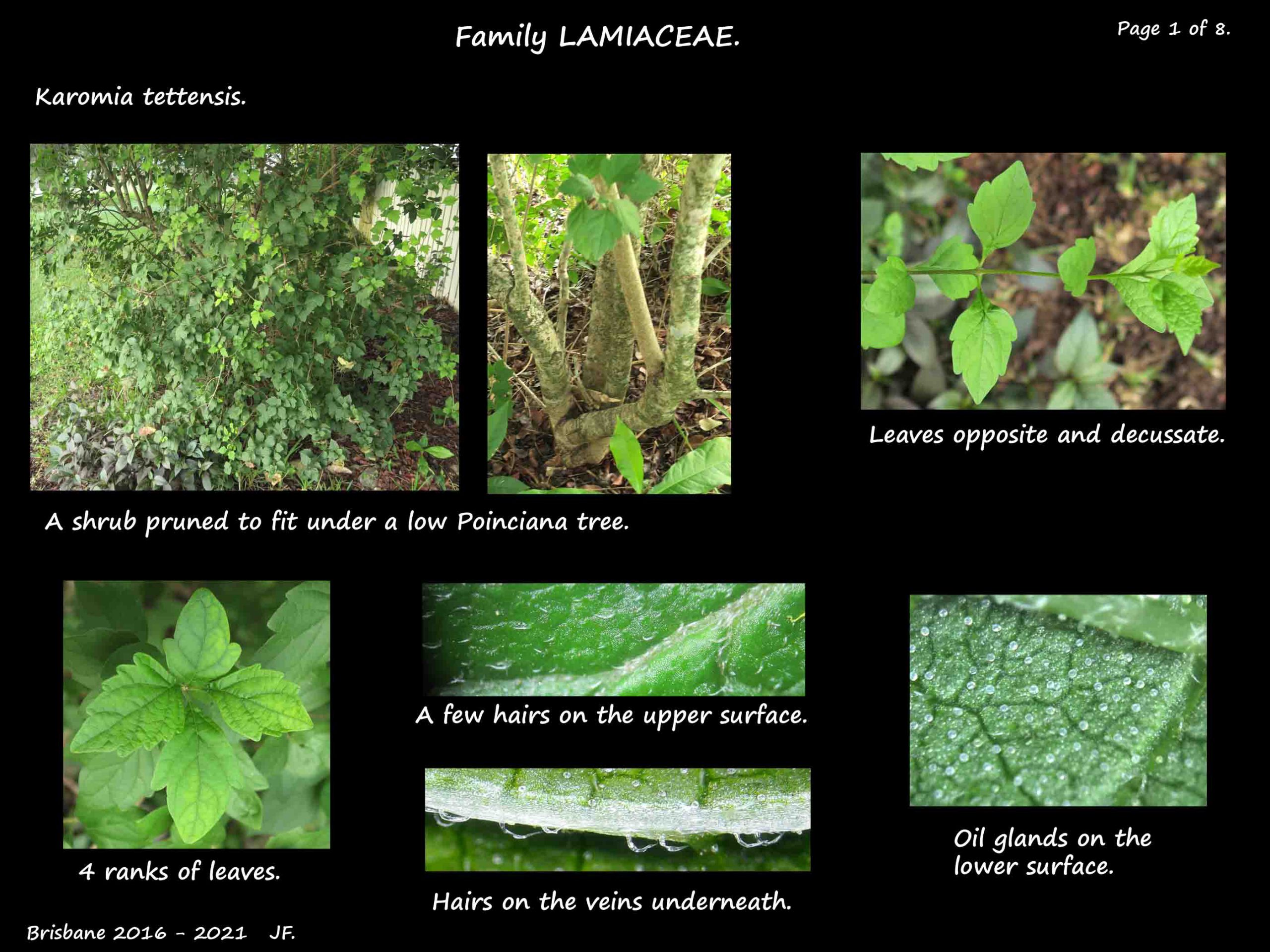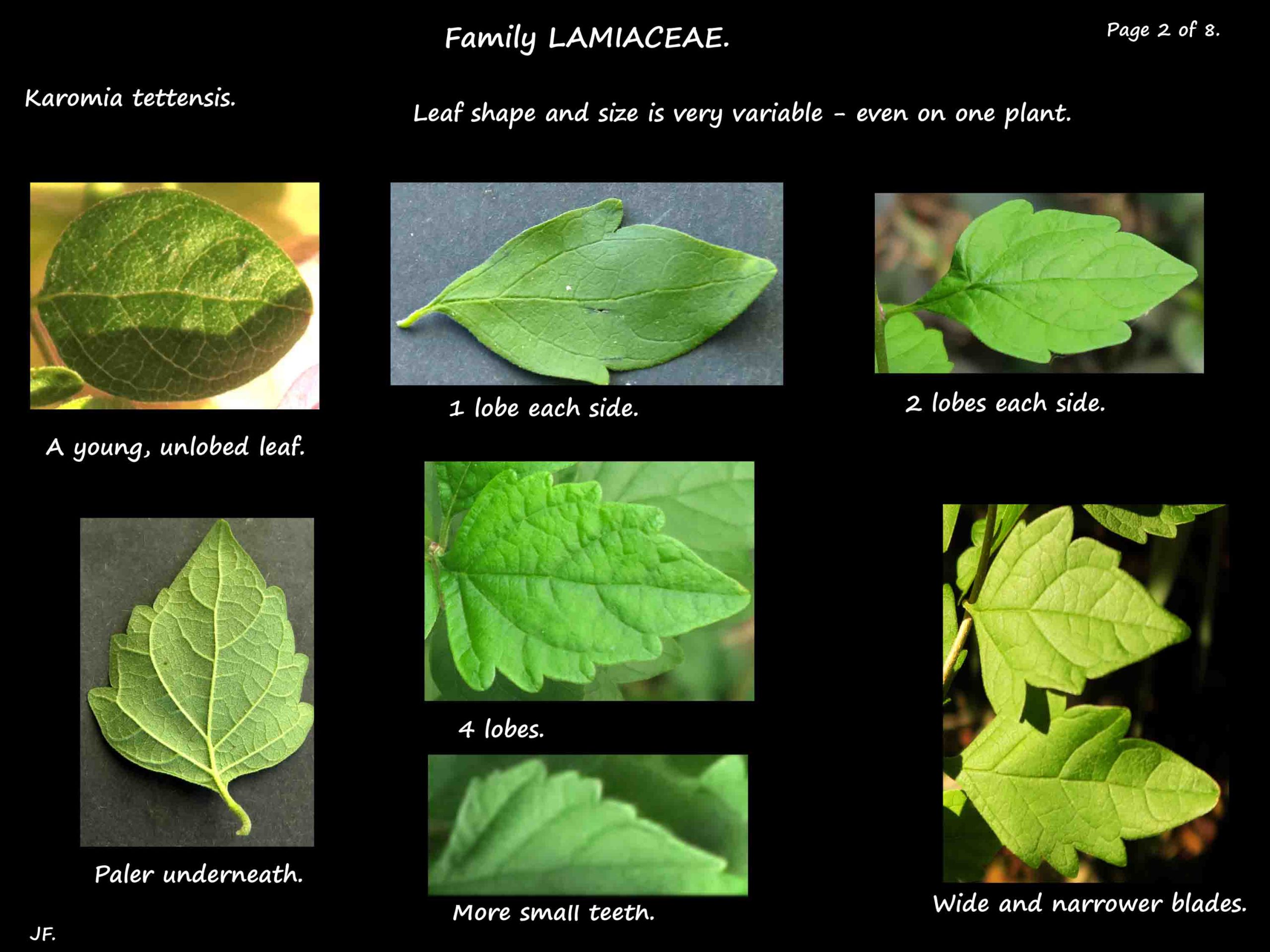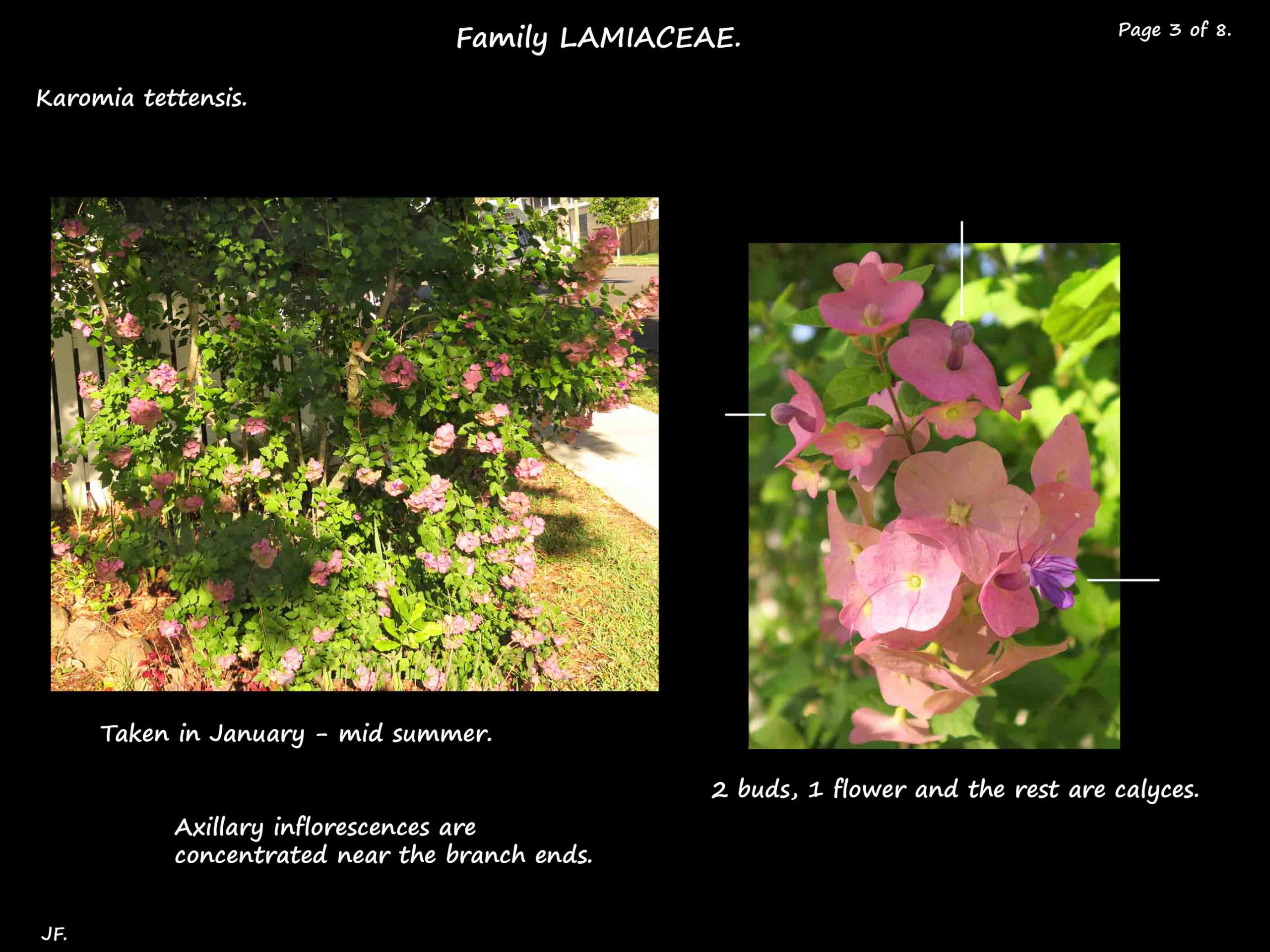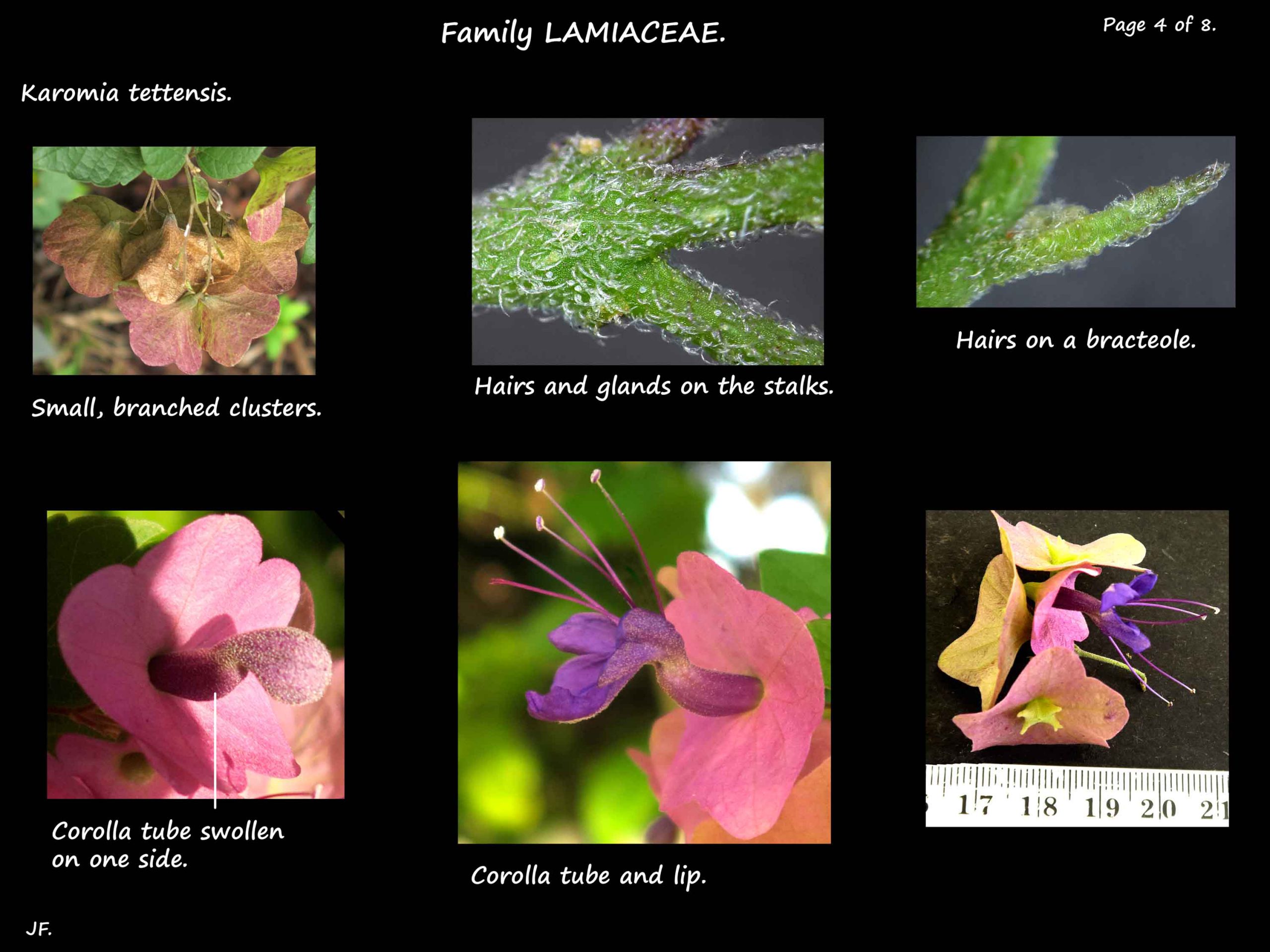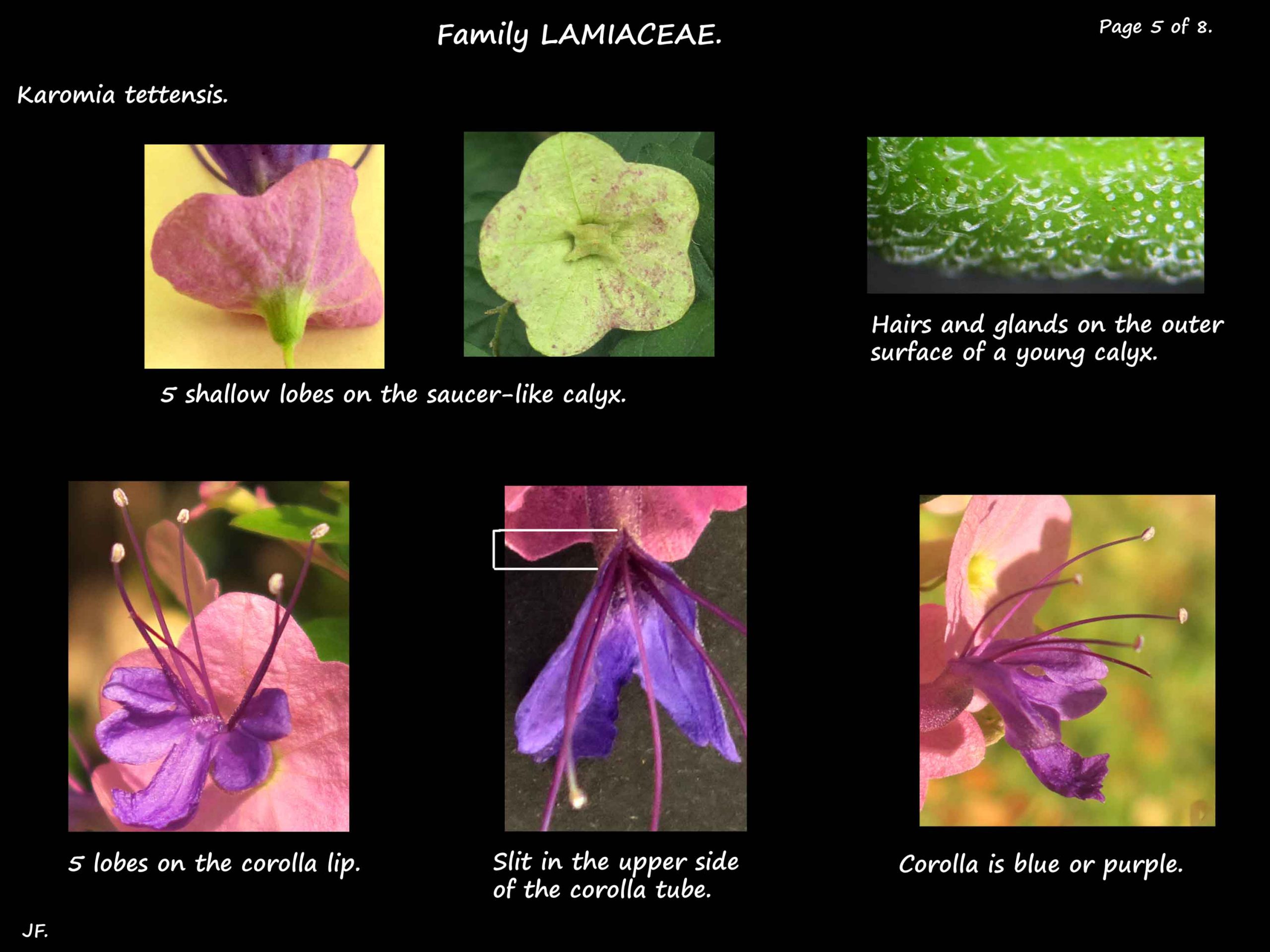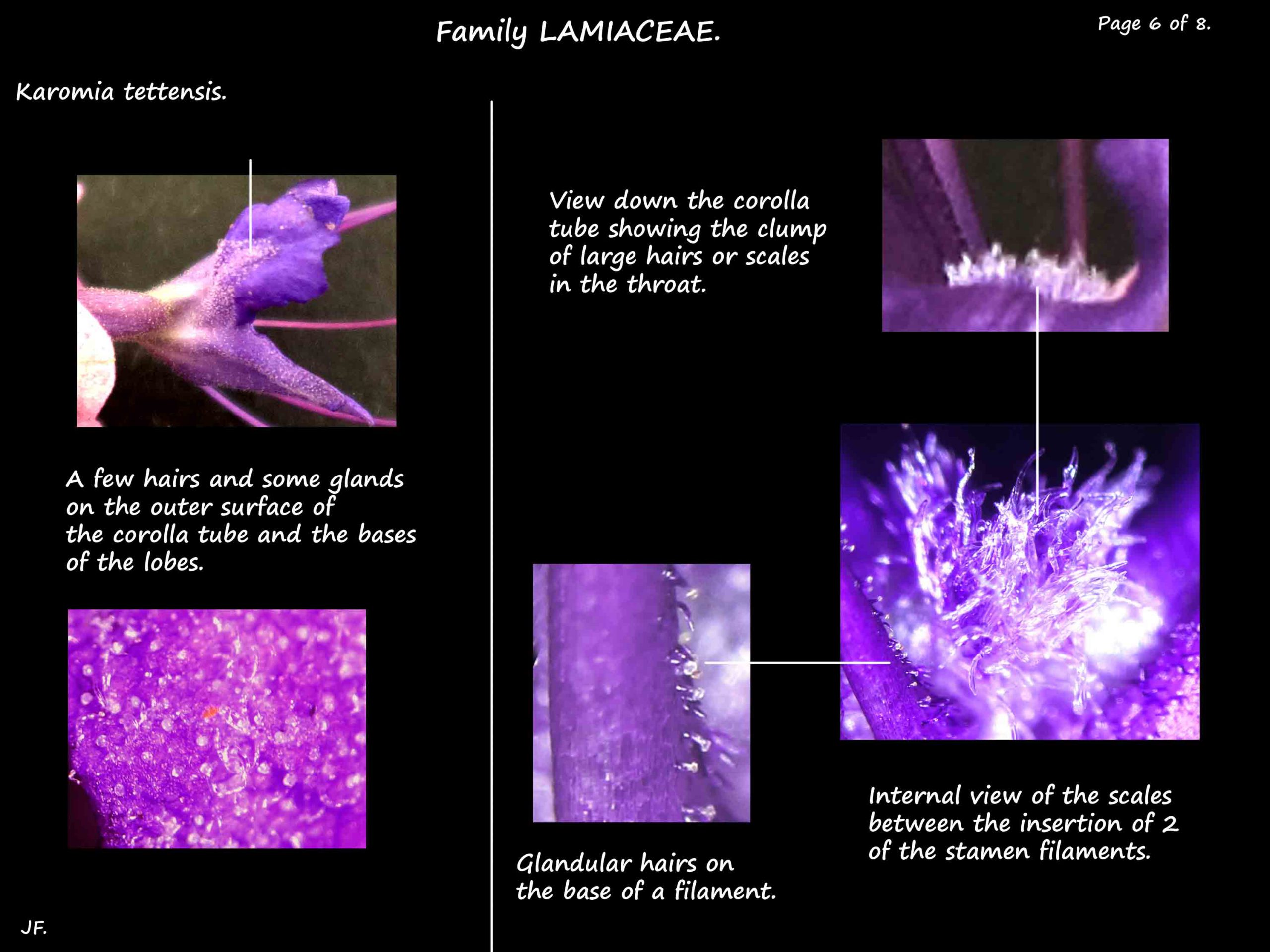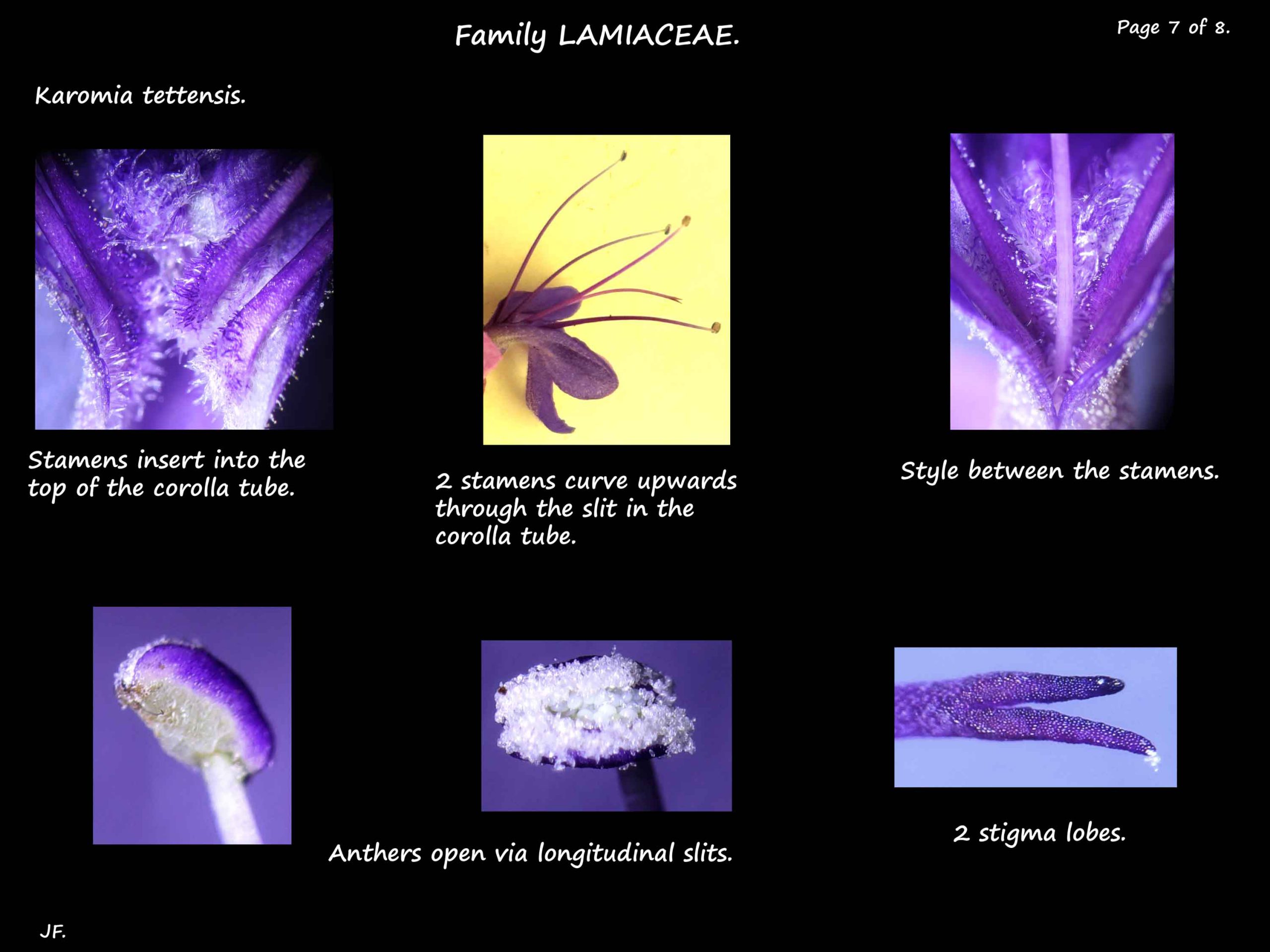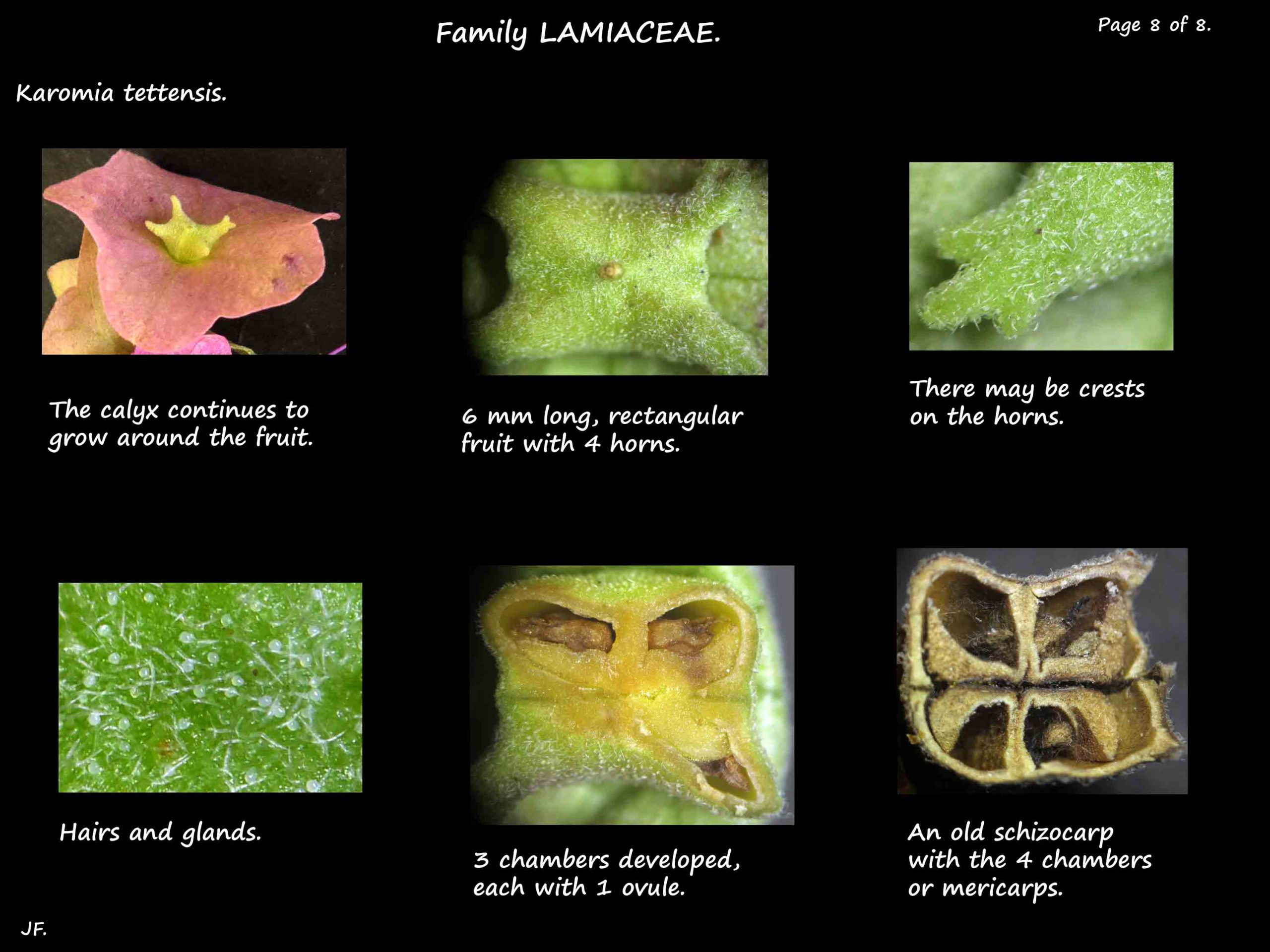Karomia tettensis.
The Purple Chinese Hat was previously known as Holmskioldia tettensis and is still
frequently seen under that name.
They are deciduous, upright, bushy shrubs 1 to 2 m high or small trees to 7 m.
The brown or grey bark has pale lenticels and there are sometimes spines.
Small branches are circular in cross section (Holmskioldia are square).
The opposite leaves are on densely hairy petioles up to 1 cm long.
The blades are around 5 cm long and 3 cm wide.
Even on a single plant they are variable in shape and size.
The blades can be elliptic, widely ovate, obovate or oblanceolate.
The edge can be smooth, have numerous shallow, blunt teeth or only one to a few larger ones.
There are a few short hairs on the upper surface.
The paler lower surface also has short hairs, mainly on the veins and there are oil glands.
The axillary inflorescences, around 4 cm long, have 1 to a few flowers.
Inflorescences are concentrated near the branch ends making them look terminal.
There are hairs on the stems, leaf-like bracts and bracteoles.
Flower stalks or pedicels are around 1 cm long with the paired bracteoles near the middle.
The fused sepals form a 1 cm long tube that flares out into a saucer-shaped upper section with 5 lobes.
There are hairs and oil glands on the outer surface of the bright pink to purplish-pink calyx.
The corolla has a short curved, tubular base that is swollen on one side.
It has a deep slit on the upper side so the 5 concave lobes are on one lip rather than 2.
The central or anterior lip is the longest and its edge may be irregular or fringed.
The deep blue to purple corolla has hairs and glands externally.
The stamens, of almost equal lengths, are up to 4 cm long and extend well past the corolla.
They insert into the upper part of the corolla tube.
The filaments curve upwards through the slit in the corolla tube.
The filament bases have short glandular hairs but the upper part is smooth.
There is a dense cluster of hairs or scales inside the throat of the tube.
The superior ovary is rectangular with a short horn on each corner.
It has simple hairs and glands.
It consists of 2 fused carpels and has 4 chambers each with 1 ovule.
The hairless style extends just past the stamens.
The 2 stigma lobes may be the same or different lengths.
The flat-topped, hairy, horned fruit are around 6 cm long.
They are surrounded by the papery calyx that has grown to be up to 2.5 cm across.
J.F.
